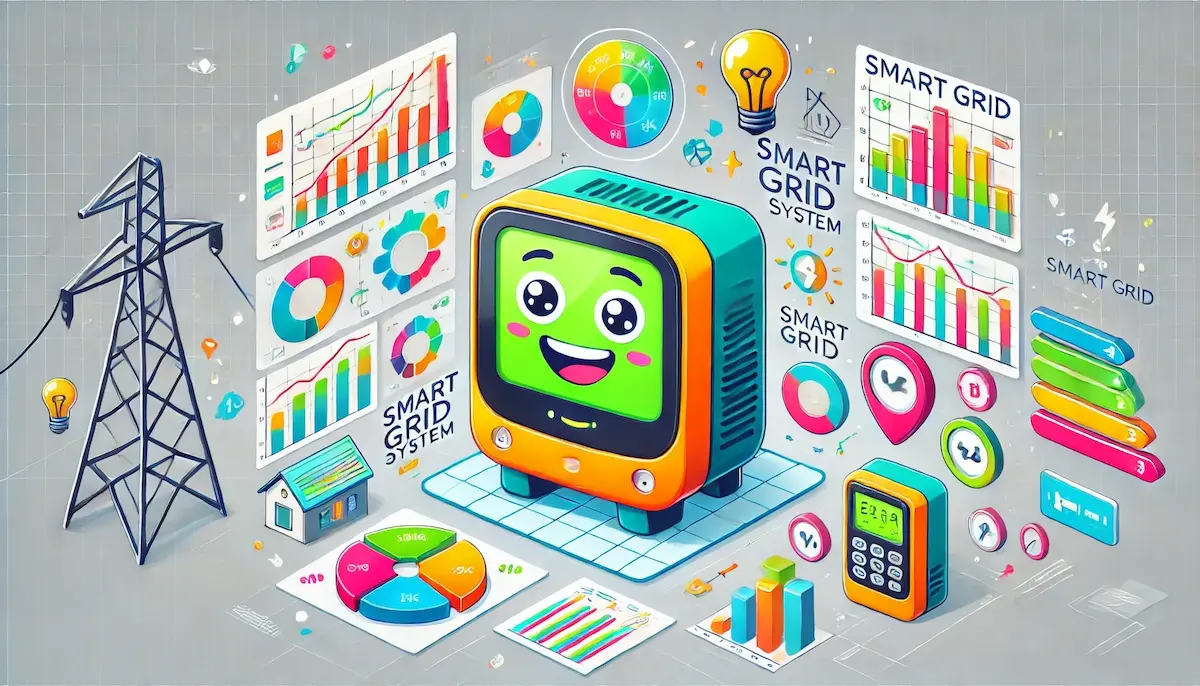Smart grid analytics is transforming the energy sector by leveraging advanced data analytics to optimize the generation, distribution, and consumption of electricity. This innovative approach integrates traditional power grids with modern information and communication technologies, resulting in a more efficient, reliable, and sustainable energy system. Let’s explore what smart grid analytics is, how it works, and its benefits.
What is Smart Grid Analytics?
Smart grid analytics involves the use of data analytics, machine learning, and artificial intelligence (AI) to analyze data from various components of the power grid. These components include smart meters, sensors, and other devices that collect real-time data on energy consumption, production, and distribution. The insights gained from this data help utilities and grid operators make informed decisions to improve grid performance and reliability.
How Smart Grid Analytics Works
Smart grid analytics operates through a series of steps that collect, process, and analyze data to optimize grid operations:
Data Collection
Smart grids are equipped with numerous devices that collect data at different points in the grid. These include:
- Smart Meters: Measure electricity usage in real-time and transmit data to utilities.
- Sensors: Monitor the condition of grid infrastructure, such as transformers and substations.
- Renewable Energy Sources: Track the output from solar panels, wind turbines, and other renewable energy sources.
Data Transmission
The collected data is transmitted to central data repositories through secure communication networks. These networks ensure that data is available for real-time analysis and decision-making.
Data Processing and Analysis
Once the data is collected, advanced analytics tools and algorithms process and analyze it. Key technologies involved include:
- Machine Learning: Identifies patterns and trends in the data to predict future grid performance and potential issues.
- Big Data Analytics: Handles large volumes of data to provide comprehensive insights into grid operations.
- Real-Time Analytics: Enables immediate analysis of data to respond quickly to any anomalies or disruptions.
Decision Making and Implementation
The insights gained from data analysis are used to make informed decisions about grid operations. These decisions can lead to:
- Optimized Energy Distribution: Ensuring that electricity is distributed efficiently to meet demand.
- Preventive Maintenance: Identifying and addressing potential issues before they lead to failures or outages.
- Enhanced Demand Response: Adjusting energy supply based on real-time consumption patterns to prevent overloads.
Benefits of Smart Grid Analytics
Smart grid analytics offers numerous benefits that enhance the efficiency, reliability, and sustainability of power grids:
Improved Reliability
By monitoring grid components in real-time, smart grid analytics can predict and prevent outages, ensuring a more reliable supply of electricity.
Enhanced Efficiency
Data-driven insights enable utilities to optimize energy distribution and reduce wastage, resulting in more efficient grid operations.
Cost Savings
Preventive maintenance and optimized operations reduce the costs associated with grid failures and inefficiencies, ultimately lowering operational expenses for utilities.
Environmental Benefits
Smart grid analytics supports the integration of renewable energy sources by managing their variability and ensuring a stable supply of clean energy. This contributes to reduced greenhouse gas emissions and a smaller carbon footprint.
Better Demand Management
Advanced analytics help utilities understand and manage energy demand more effectively, allowing for better planning and load balancing. This can lead to reduced energy costs for consumers and more stable grid operations.
Enhanced Customer Experience
By providing real-time data on energy usage, smart grid analytics empowers consumers to make informed decisions about their energy consumption, leading to potential cost savings and increased satisfaction.
The Future of Smart Grid Analytics
The future of smart grid analytics is promising, with ongoing advancements in technology expected to drive further improvements in grid operations:
- Artificial Intelligence: The integration of more advanced AI algorithms will enhance predictive analytics and automate decision-making processes.
- Internet of Things (IoT): The continued proliferation of IoT devices will provide even more data points for comprehensive grid analysis.
- Edge Computing: Bringing computation closer to the data source will enable faster analysis and response times, improving grid reliability and efficiency.
Smart grid analytics is set to play a crucial role in shaping the future of energy management, paving the way for a more efficient, reliable, and sustainable power grid.
Blockfine thanks you for reading and hopes you found this article helpful.
